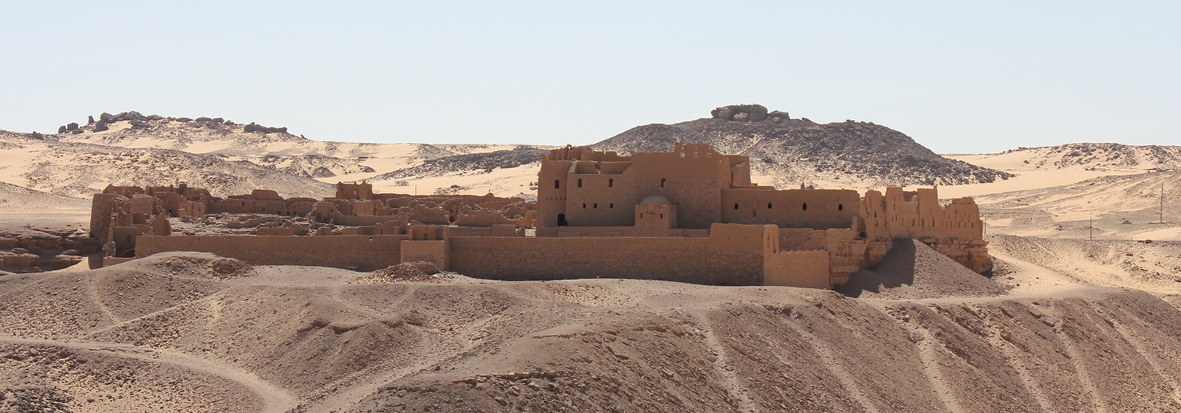Deir Anba Hadra, also known as monastery of St. Simeon, is located on the West bank of Assuan across from Elephantine island about one kilometer inland on the gebel, overlooking a desert valley. Its ruin, dominated by the monumental residential tower, belongs to the best-preserved specimens of monastic architecture from late antique and early Islamicate Egypt. The ongoing work on the monastery, a cooperation between the German Archaeological Institute, Dept. Cairo, and the Excellence Cluster Topoi further expands on the architectural history of the church, its painted decoration, the economic buildings of the monastery, and archaeo-botanical research.
Research
After occasional surveys in the later 19th and early 20th century, the German Archaeological Institute (DAI) resumed investigation in 2013, starting with an epigraphic survey. In 2014 the DAI project “Dayr Anba Hadra – Epigraphy, Art and Architecture of a monastery on the West bank of Assuan” was initiated. The research agenda of this project embraces Coptic and Arabic epigraphy, the documentation and study of painted decoration, the analysis and conservation of mortars and plasters serving as painting grounds and writing surfaces, the study of the architectural history of the church and of the economic building, and archaeobotanical sampling and investigation. The overall issues of the project include:
- the study of Coptic, Christian Arabic and Muslim visitors’ inscriptions in synchronic, diachronic, and comparative perspectives
- the chronology, development and functionality of Deir Anba Hadra at a local, regional and supra-regional scale
- the development & typology of local ecclesiastic architecture and decoration programs
- the encounter and interaction between Christians and Muslims in Fatimide, Ayyubide and Mamluk Assuan, and
- economy and trade in the 1st cataract region
contribution by the Excellence Cluster Topoi
The project was part of the overall project “Dayr Anba Hadra – Epigraphy, Art and Architecture of a monastery on the West bank of Assuan”. Egyptologist Lena Krastel (BerGSAS, ALT) and archaeologist Sebastian Olschok (BerGSAS, LAA) are doing their doctoral research in this framework. Lena Krastel is working on a socio-cultural study based on the Coptic inscriptions of Deir Anba Hadra, a corpus of more than 100 funerary stelae from the monastery’s cemetery and about 300 visitors’ inscription within the monastery. Sebastian Olschok is working on the historical development and the function(s) of the economic building of Deir Anba Hadra. Gertrud van Loon (KU Leuven), expert in the art of Christian Egypt and the project’s art historian ‘in charge’, was in Berlin three times as a Topoi senior fellow. Two further senior fellows, Kathryn Piquette (London) and Mennat-Allah El-Dorry (Cairo), are responsible for the photographic documentation and the achaeobotanical work of the project.
Activities
Several excavation campaigns have been untertaken from 2014 until today. Furthermore results of the project has been presented at diverse workshops, international conferences and lectures for a wider public:
- Events organized by research project (B-4-6) Deir Anba Hadra
- Tonio Sebastian Richter on results and topics of Deir Anba Hadra
- Gertrud van Loon on results and topics of Deir Anba Hadra
- Lena Krastel on results and topics of Deir Anba Hadra
- Sebastian Olschok on results and topics of Deir Anba Hadra

